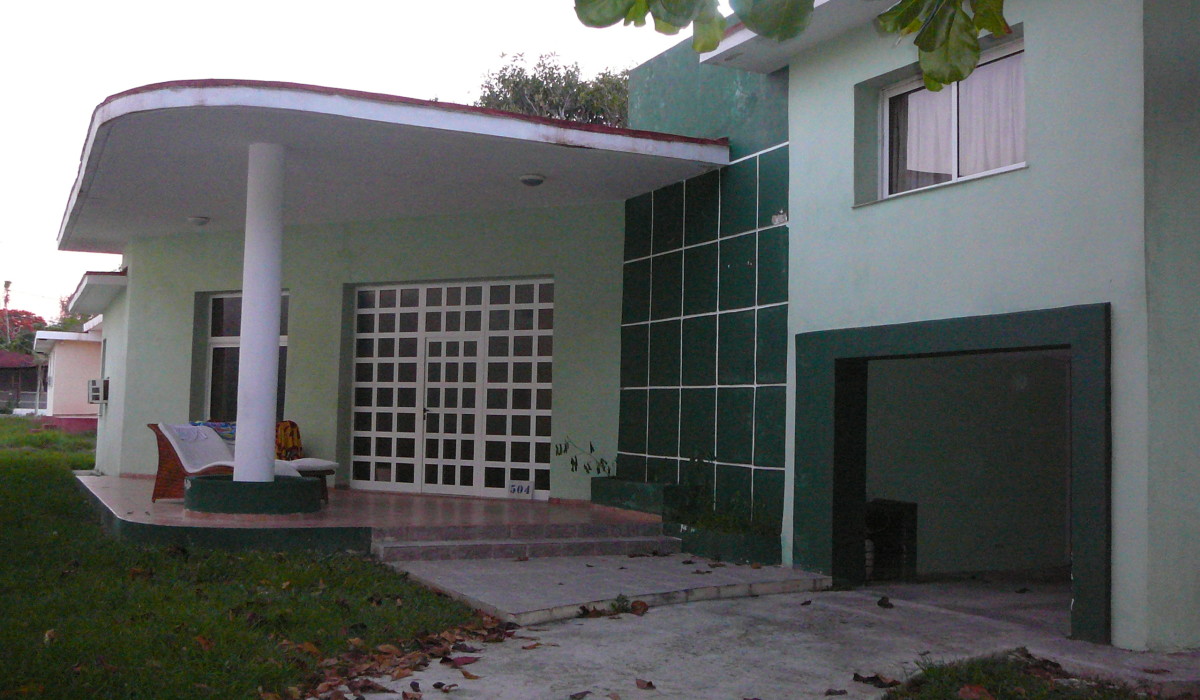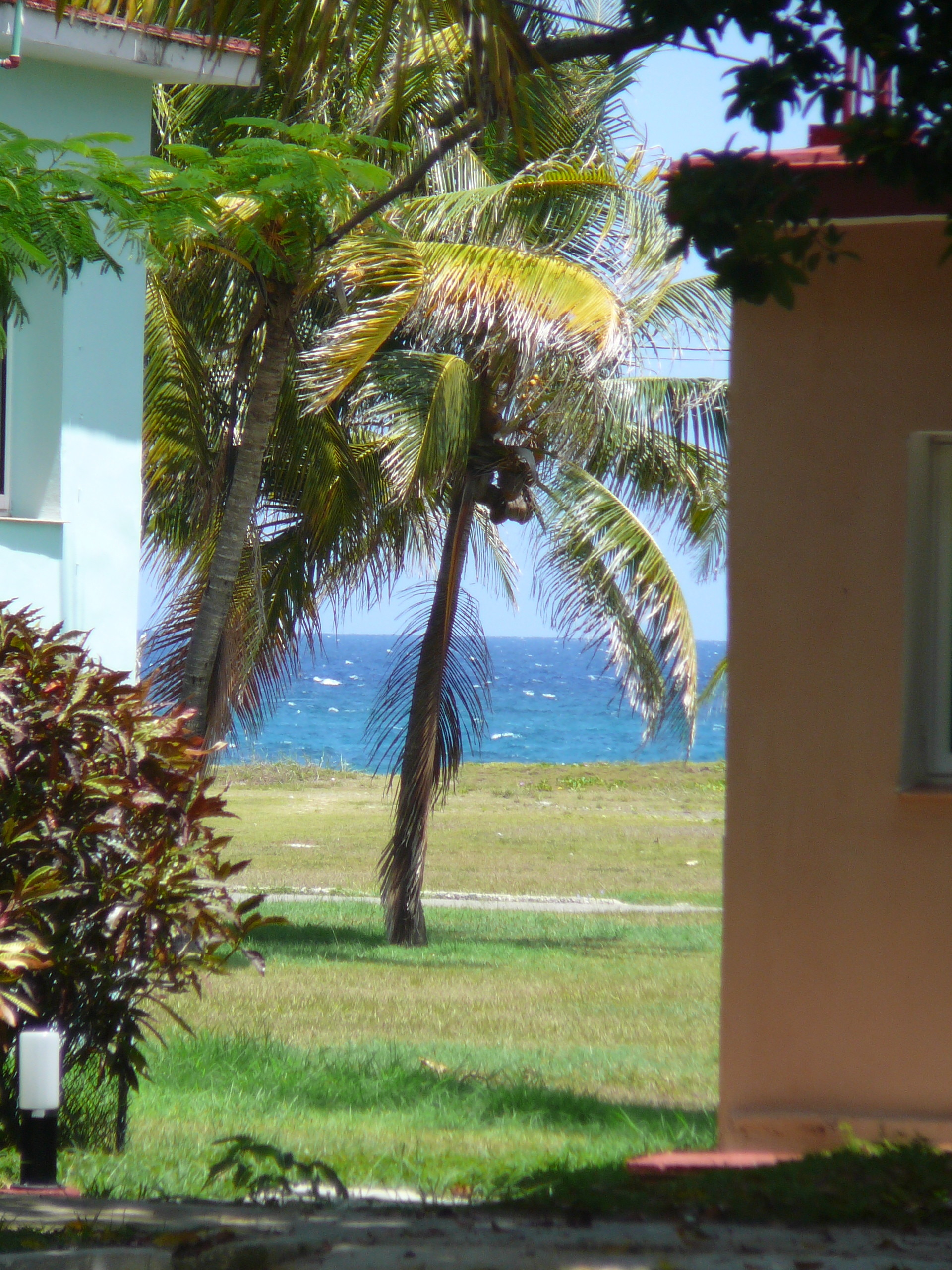La Casa Verde
No shaky metal stairs this time. Instead, it was a “proper” glass enclosed tunnel leading into the Juan G. Gómez airport building. Varadero airport is one of the busiest in Cuba, understandably so, considering the number of hotels built in the past 20 years on a relatively small stretch of Cuban coast.
There are several options for transportation to Havana if you are not a package tourist. You can strike a deal with anyone who owns a car and is willing to drive you (this, of course, is illegal), you can ask if there is a bus driving package tourists to Havana (in an off season-in summer, there is a slim chance of that happening) and pay the driver-less than what you would pay for a taxi, or you can take a regular taxi. I opted for the last, as I wanted to get to our final destination as quickly as possible. I have arrived with my two kids, they are 15 and 11, a good age to try something different. This time, instead of staying in a hotel, we are renting a house in Tarará, a village about 20 km east of Havana.
The community of Tarará was developed in the 1940s by a wealthy American who bought a large piece of land facing the ocean, bordered on the west side by Rio Tarará. Royal Sylvester Webster, for that was his name, built around 400 houses, stores, a yacht club, a church, a movie theatre, a public park and beach facilities. He resided in Tarará with his whole family until shortly after the triumph of the Revolution, when all of his property was confiscated and the whole family was forced to leave the island.
In January of 1959, shortly after Castro’s forces entered Havana, Che Guevara lived in Tarará for a while, and returned later in the year for a honeymoon after marrying Aleida March. Cuban government continued building houses and various public structures, including a pentagram shaped amusement park on the west bank of Rio Tarará which now lies in ruin. For a number of years the houses, most of which were confiscated from their pre-revolutionary Cuban and American owners, were used for overnight school camps for kids residing in Havana. Until the early 1990s, some of the houses were occupied by numerous Russian officials stationed in Cuba. For a few years after the Chernobyl nuclear disaster in 1986, Tarará functioned as a resort for Ukrainian children physically or psychologically affected by the disaster. After the Cuban government partially opened the door to let foreign investment in, in mid-late ‘90s, some houses were rented to foreign businessmen who preferred to stay here, rather than in the city. Then came the Venezuelan eye patients and Chinese students, and after they all left, the houses were given to a Cuban hotel chain and can now be rented by Cuban and foreign tourists.
The house we got is on a second street parallel to the beach, it’s a 1940s original, painted on the outside in two shades of green. It’s a spacious two bedroom with two bathrooms and a washroom, a large living-dining area and an adequate kitchen. There are two doors in the kitchen-one leading to an area at the back of the house with an outdoor shower and two sinks, which was-I’m assuming, used by the maid for her personal hygiene and for washing the family’s clothes. The other door leads to a one car garage, and in it is another door for an access to a maid’s room above it. We got a bunch of keys, five to be exact, but all of the three exterior doors are unlocked with the same key, another one unlocks the kitchen door leading to the garage and I have no idea what the other ones are for. We tried all of them on a maid’s room door, unsuccessfully. One day, I will ask the chambermaid to unlock it so I can take a peak.
The ceilings in the house are twelve foot high, some of the walls are angled and the portion of the exterior wall where the dining alcove is, is curved. The house is equipped with lifeless rattan furniture, the floor tiles are obviously not original and are a horrible unidentifiable color, the walls in the living room are painted in a combination of light and dark blue and there are only three paintings in the entire house-large, abstract and unappealing. I love the house and I can see past the clumsy way in which it has been renovated, I can tell it was carefully planned and I try to imagine it in all its glory, with the original wood furniture (it had to be wood) and large ceiling fans. I wonder who the original owners were and I decide to one day visit the museum and try to find out.
The best part of the house is outside-a large front terrace covered with a flat roof supported, in one corner, by a single round column. There are two concrete planters against the exterior wall with only a few plants I suspect are weeds, and a circular one at the base of the column, filled with a mixture of dry soil, sand and cigarette butts. I am determined to make the house our home, even if only for a month, so I pick all the cigarette butts out of the dirt and decide to look for some plants on our daily walks. The terrace will be my sanctuary, I decide, this is where I will have my morning coffees and my afternoon siestas, and every time I look up, there it will be-my very own piece of the Atlantic. It is quiet and peaceful here and the silence is broken only by the occasional humming of water pumps, a rare car engine and birds’ chirping.

